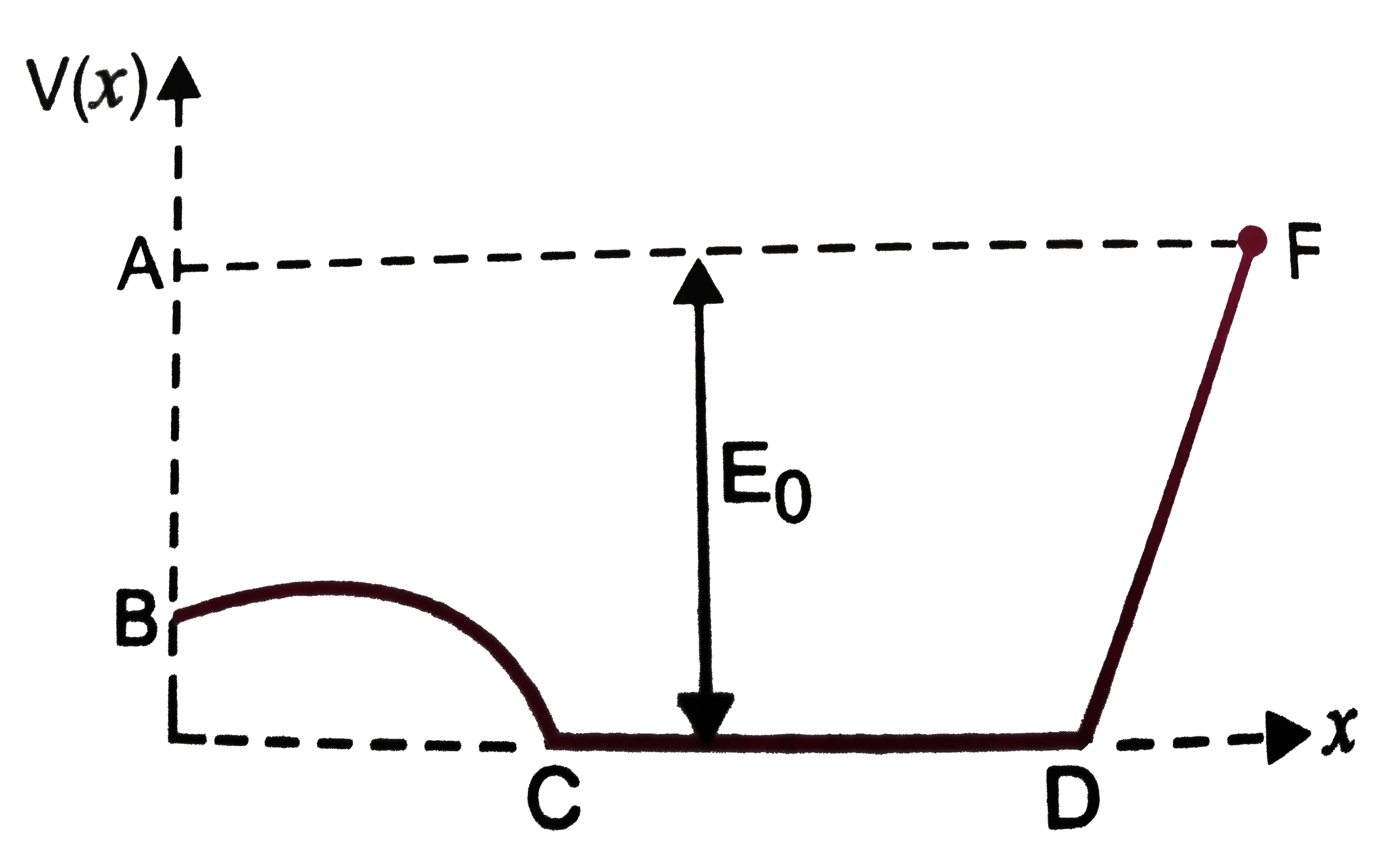The potential energy function for a particle executing linear SHM is given by V(x)=12kx2 where k is the force constant of the oscillator. For k=0.5Nm−1, the graph of V(x) versus x is shown in the figure A particle of total energy E turns back when it reaches x=±xm.if V and K indicate the potential energy and kinetic energy respectively of the particle at x=+xm,then which of the following is correct?

V=0, K=E
V=E, K=0
V lt K, K=0
V=0, K lt E
The correct Answer is:B
At any instant, the total energy of an oscillator is the sum of kinetic energy and potential energy.
Total energy, E=K + V
At x=+xm, the particle turns back, therefore its velocity at this point is zero, i.e. v=0
∴ K=0
∴E=12kx2=V
Topper's Solved these Questions
- WORK , ENERGY AND POWERBOOK - NCERT FINGERTIPSCHAPTER - WORK , ENERGY AND POWEREXERCISE - Assertion And Reason
15 Videos
- WORK , ENERGY AND POWERBOOK - NCERT FINGERTIPSCHAPTER - WORK , ENERGY AND POWEREXERCISE - Higher Order Thinking Skills
8 Videos
- WAVESBOOK - NCERT FINGERTIPSCHAPTER - WAVESEXERCISE - Assertion And Reason
15 Videos
Similar Questions
The potential energy function for a particle executing simple harmonic motion is given by V(x)=12kx2, where k is the force constant of the oscillatore. For k=12Nm−1, show that a particle of total energy 1 joule moving under this potential must turn back when it reaches x=±2m.
View SolutionA graph of potential energy V(x) verses x is shown in figure. A particle of energy E0 is executing motion in it. Draw graph of velocity and kinetic energy versus x for one complete cycle AFA.

View Solution
Knowledge Check
The potential energy of a particle (Ux) executing SHM is given by
AUx=K2(x−x0)2BUx=K1x+K2x2+K3x3CUx=Ae−bxDUx= constantThe potential energy function of a particle in the x-y plane is given by U=k(x+y), where (k) is a constant. The work done by the conservative force in moving a particlae from (1,1) to (2,3) is .
A−3kB+3kCkDNone of thesePotential energy of a particle at position x is given by U=x2−5x. Which of the following is equilibrium position of the particle?
Ax=0Bx=5Cx=2.5Dx=7.5
The total energy of a particle executing SHM is E. Its kinetic energy is K at the mean position. Then always
View SolutionA satellite has kinetic energy K, potential energy V and total energy E. Which of the following statements is true?
View SolutionA satellite has kinetic energy K, potential energy V and total energy E. Which of the following statements is true ?
View SolutionIf x, v, a, K.E. and P.E. represent displacement, velocity, acceleration, kinetic energy and potential energy at any instant respectively for a particle executing S.H.M., then which of the following statements is INCORRECT?
View SolutionThe potential energy of a particle with displacement X is U(X). The motion is simple harmonic, when (K is a positive constant)
View Solution
